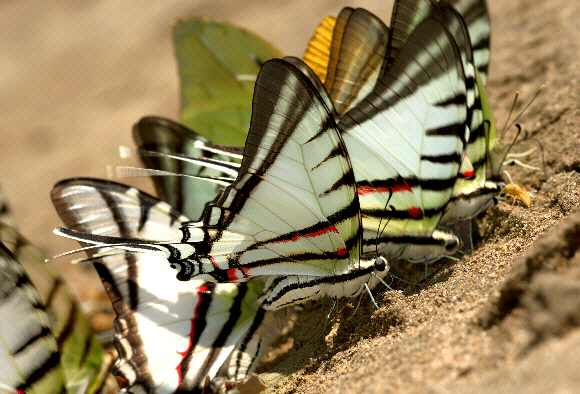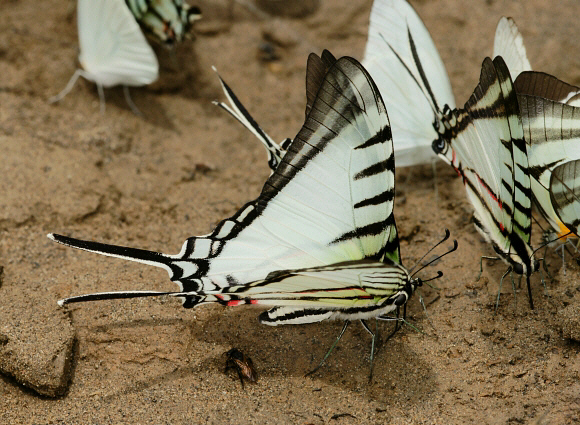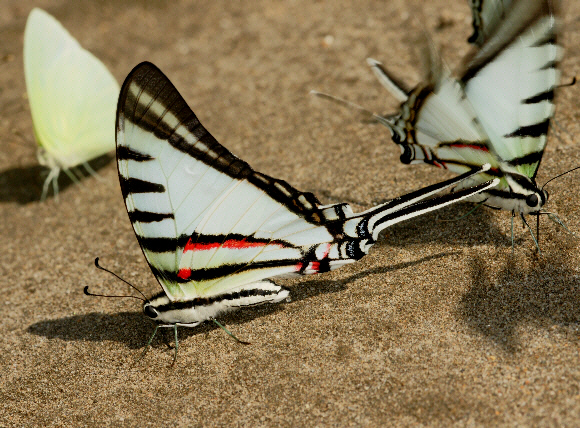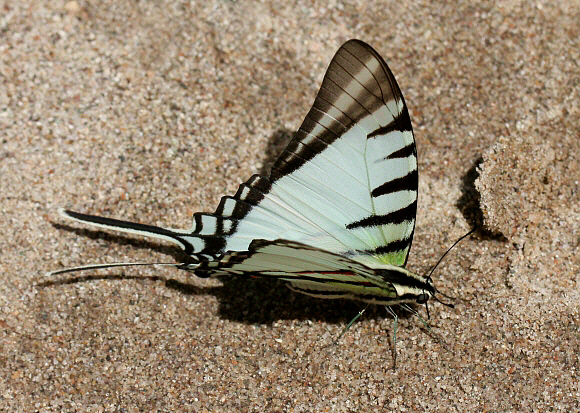
Introduction
The 13 species in the genus Neographium are characterised by having translucent white or yellowish wings, marked with bands or stripes of black or dark brown. The forewings are decidedly triangular in shape, and the hindwings adorned with a single long sword-like tail. The bodies are relatively short, and the antennal tips strongly recurved.
Neographium agesilaus can easily be confused with other Swordtails, but can be identified from the underside hindwings, on which the red streak is on the basal side of the black streak in agesilaus, but is on the outer side of the black streak in Protographium and Protesilaus species.
N. agesilaus occurs from Mexico to Bolivia.

Habitats
This species occurs in lowland rainforests and pre-montane cloudforests at elevations from about 100-1800m.
Lifecycle
The eggs are reportedly laid singly on leaves at the top of trees ( Annonaceae ). The caterpillar, if similar to related species, is probably green, marbled with brownish or pink, and with the thoracic segments enlarged. The chrysalis, again if similar to related species, is likely to have a prominent projection from the thorax, and will be attached vertically to a twig or branch by means of the cremaster and a silken girdle.

Adult behaviour
Swordtails such as Neographium agesilaus are migratory in behaviour, following river courses as they travel. Males can often be seen gathered on sandbanks, filter-feeding on dissolved minerals by continually pumping water though their bodies. This species invariably congregates in small groups of up to about 15 other Swordtails, either entirely of its own species, or more frequently with other Leptocircini such as Eurytides dolicaon and Protesilaus protesilaus. These groups are usually well separated from groups of Pierids or Nymphalids feeding on the same sandbank. The entire group usually face into the breeze.

